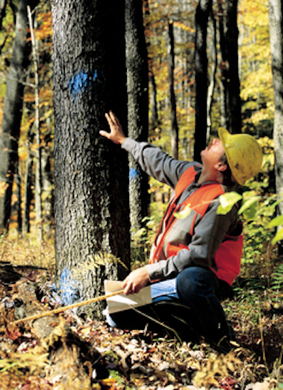KBzine: the original kitchen and bathroom industry e-news - since 2002
22nd December 2020
We strongly recommend viewing KBzine full size in your web browser. Click our masthead above to visit our website version.
AHEC launches new and improved American Hardwood Environmental Profile
 The American Hardwood Export Council has developed an easy to use visual system to allow US hardwood exporters to create a comprehensive American Hardwood Environmental Profile (AHEP) with each individual consignment of product delivered to any market in the world.
The American Hardwood Export Council has developed an easy to use visual system to allow US hardwood exporters to create a comprehensive American Hardwood Environmental Profile (AHEP) with each individual consignment of product delivered to any market in the world.
The structure and content of the AHEP aligns to the requirements of the EU Timber Regulation (EUTR) and closely follows the European Commission's guidance for the EUTR.
Simply put, AHEPs are a consignment-specific shipping document providing information to demonstrate the legality and sustainability of the US hardwood species contained in that shipment including quantitative data on the environmental impacts associated with delivering it anywhere in the world.
By following the European Commission's EUTR guidance, the AHEP provides, for every consignment, access to information on the name of the US supplier, product description, quantity of wood, commercial and scientific species name, place of harvest, and access to documents demonstrating negligible risk of illegal harvest.
These documents therefore help satisfy 'due diligence' requirements arising from illegal logging legislation such as the Lacey Act in the US, the EU Timber Regulation, and Japanese 'Green Procurement' laws. They also encourage market recognition of the wider environmental benefits of American hardwoods.
By using the comprehensive forest inventory data compiled regularly by the US Forest Service through their Forest Inventory and Analysis (FIA) programme, AHEPs can demonstrate quite clearly that American hardwoods are sustainable too.
Data on forest conditions, collected on the ground, at least once a decade for nearly a century, is supplemented with more regular information from satellites and other remote sensing. This data provides detailed growth and harvest information by species, not just for the hardwood forest as a whole, but also for all hardwood producing States and even the relevant counties within those States.
This information allows hardwood importers to include annual growth rates, harvest rates and therefore net volume increases for each and every American hardwood species across the US.
So for example by using the AHEP tool (accessing 2014 FIA data) we know American tulipwood growing stock is 1.02 billion cu.m, 7.7% of total US hardwood growing stock. US tulipwood is growing 32.5 million cu.m/year while the harvest is 12.8 million cu.m/year. The net volume (after harvest) is increasing 19.7 million cu.m each year. US tulipwood growth exceeds harvest in all states. American white oak growing stock is 2.08 billion cu.m, 15.7% of total US hardwood growing stock. US white oak is growing 39.6 million cu.m /year while the harvest is 20.9 million m3/year. The net volume (after harvest) is increasing 18.6 million m3 each year. US white oak growth exceeds harvest in all major supplying states.
Furthermore, using AHEC's LCA research, the AHEP is able to model the full environmental impact of delivering US hardwood lumber and veneer to any market in the world. Data can be individually tailored to any one of 19 US hardwoods, which together account for over 95% of all US hardwood production.
The impact categories graphically illustrated in the AHEP are those required for the European Product Environmental Footprint standard currently in development. They also provide information required by manufacturers producing Environmental Product Declarations in line with the EN 15804 standard for environmental assessment of construction materials in the EU. In addition the AHEP shows how much carbon is stored in each cu.m of any species of any thickness within a given consignment. In almost every case more carbon is stored than emitted during all the stages to extract, process and deliver the material.
There is an incredible mix of robust data sources which feed into the AHEP, including:
� The US Forest Service Forest Inventory and Analysis programme, a Federal Government programme which regularly monitors the condition of the nation's forests.
� The independent peer-reviewed 'Assessment of Lawful Harvesting & Sustainability of US Hardwood Exports' commissioned by AHEC from Seneca Creek Associates. The study demonstrates a negligible risk of any US hardwood being derived from illegal logging or other controversial forest sources.
� The Forest Stewardship Council Risk Register, a free source of information on the risk of sourcing controversial timber throughout the world covering more than 150 countries.
All AHEC members are given free access to the online based AHEP system and can provide the profile for a given consignment free of charge, as a separate PDF or as part of the shipping documentation.
E: [email protected]
W: www.americanhardwood.org
6th May 2016








